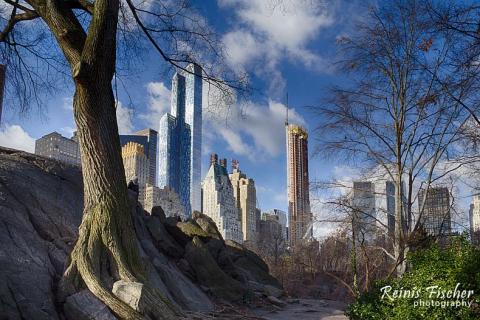Central Park is an urban park in Manhattan, New York City. Central Park is the most visited urban park in the United States, with about 40 million visitors yearly, also it's one of the most filmed locations in the world.
Central Park should be on every travelers, going to the NYC, bucket list, I first visited it in the Spring 2012, and was really amazed of an elegant urban/nature solutions in the middle of... New York. At the end of 2016 I had a chance to visit New York again - this time I was prepared with a tripod and camera.

Central park in New York city
Originally park was established in 1857 on 778 acres (315 ha) of city-owned land.
Central Park was designated a National Historic Landmark by the U.S. Department of the Interior in 1962. The Park, managed for decades by the New York City Department of Parks and Recreation, is currently managed by the Central Park Conservancy under contract with the municipal government in a public-private partnership. The Conservancy is a non-profit organization that contributes 75 percent of Central Park's $65 million annual budget and is responsible for all basic care of the 843-acre park.

One of the park's bridges; no two are alike
This one seems pretty much featured in many movies, like Home Alone 2: Lost in New York city.

Urban nature
There are four different types of bedrock in Manhattan. In Central Park, Manhattan schist and Hartland schist, which are both metamorphosed sedimentary rock, are exposed in various outcroppings. The other two types, Fordham gneiss (an older deeper layer) and Inwood marble (metamorphosed limestone which overlays the gneiss), do not surface in the park.[68] Fordham gneiss, which consists of metamorphosed igneous rocks, was formed a billion years ago, during what is known as the Grenville orogeny that occurred during the creation of an ancient super-continent. It is the oldest rock in the Canadian Shield, the most ancient part of the North American tectonic plate. Manhattan schist and Hartland schist were formed in the Iapetus Ocean during the Taconic orogeny in the Paleozoic era, about 450 million years ago. During this period the tectonic plates began to move toward each other, which resulted in the creation of the supercontinent, Pangaea
